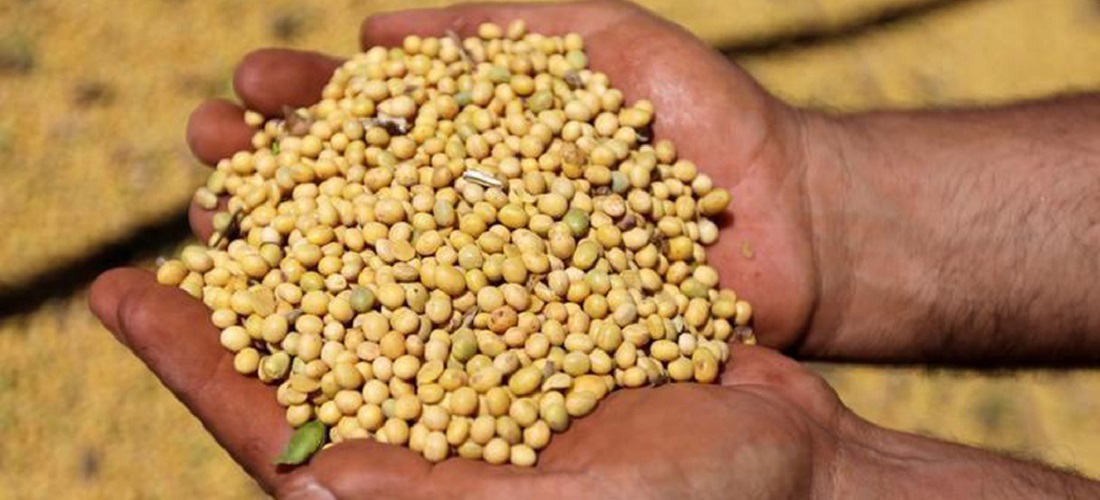
U.S. share in China’s soybean market to dwindle as Argentina boosts supply
May, 08, 2024 Posted by Gabriel MalheirosWeek 202418
U.S. soybean exports to China, which have been declining for several years as Brazil builds its dominance in the world’s biggest oilseed market, face a further threat in 2024 as bumper supply from Argentina heightens competition.
The U.S. made up under a quarter of China’s soybean imports last year versus 51% in 2009, according to the United Nations Commodity Trade Statistics Database, as rising Chinese demand has been met with surging production from Brazil and Argentina.
“This year we have large soybean supply coming from Argentina which is going to heat up competition,” said one trader in Singapore at an international company that owns oilseed processing factories in China.
“U.S. share is already shrinking. They are going to lose more to Argentina this year.”
The drop in U.S. soybeans to China could add more pressure on Chicago Board of Trade soybean futures Sv1, which have dropped almost 10% in 2024 after losing some 15% last year.
China is by far the biggest importer of soybeans, which are crushed to make protein-rich meal for fattening animals and oil used in cooking and a range of products. China’s soybean imports have nearly doubled in 15 years to 99.41 million metric tons in 2023, worth $60 billion.
“This year, Brazilian soybean output has declined slightly but Argentina’s production has increased,” said an oilseed trader at a state-owned trading firm in Beijing. “Argentine beans are likely to replace some U.S. beans during the fourth quarter.”
The following chart shows the soy export volume from Brazil to China between Jan 2021 and Mar 2023. The data is derived from DataLiner.
Soy Exports to China | Jan 2021 – Mar 2023 | WTMT
Source: DataLiner (click here to request a demo)
Big crops, competitive prices
Argentina, the No.3 soybean grower after Brazil and the United States, is forecast to produce around 50 million metric tons in 2024, more than double the previous year’s output of 21 million tons, when a historic drought decimated the crop.
Even though Brazil’s output is expected to decline this year, the agricultural powerhouse will have ample supplies to meet demand from its top customer, traders said.
Brazilian crop agency Conab reduced the country’s soybean production to 146.522 million metric tons in the 2023/24 cycle, 5.2% below last year.
Competitive prices offered by Latin American suppliers are driving their rising share of China’s soybean market, traders said, although rivalry between Beijing and Washington is also a factor.
Brazilian soybeans were quoted at $1.30 per bushel premium to November Chicago Board of Trade contract SX24, compared with $2.30 being priced for U.S. beans. Argentina’s June shipment is being offered at $1.45 premium to July SN24.
In March, China’s soybean imports from the United States fell by half from a year earlier.
“We have cut down our soybean imports from the U.S. this year,” said a second trader in Singapore at a privately-owned trading company, citing cheaper Brazilian beans. “In fact, it has been pretty drastic, we have hardly been buying U.S. beans.”
The upcoming U.S. presidential election is also prompting some Chinese buyers to take more cargoes from Brazil and Argentina to lower risks of supply disruptions.
“U.S. market share will continue to decline because you have the political backdrop of elections,” said a Shanghai-based trader with an international trading firm.
“If Trump wins, it will be bad for the U.S.-China relationship. A lot of crushers have concerns about possible restrictions on importing U.S. beans.”
During the trade war under Donald Trump’s presidency, China diversified its soybean imports, increasing purchases from Brazil and Argentina to reduce reliance on U.S. soybeans and mitigate the impact of higher tariffs.
China, which buys more than 60% of soybeans traded worldwide, is likely to purchase 100 million tons of the oilseed in 2024, similar to last year, as it capitalises on cheaper prices and adds to stockpiles despite declining demand from the animal feed sector, traders said.
U.S. growers are steeling themselves for the bumper harvests from Latin America.
The U.S. industry is developing newer markets such as Southeast Asia and banking on higher domestic demand for making renewable fuels, said Jeff O’Connor, a soybean farmer in Illinois, the top producing state.
“What we are losing internationally to China we cannot make up for domestically in one year’s time. We cannot replace that overnight,” he said.
-
Ports and Terminals
Feb, 08, 2024
0
Court suspends OSX’s rental contract with Açu Port
-
Shipping
May, 30, 2023
0
DP World inaugurates express service between Manaus and Santos
-
Meat
Jun, 12, 2023
0
Brazilian pork exports surge significantly in May 2023
-
Grains
Mar, 24, 2023
0
Argentina exchange sees 2022/23 soy imports up 139% due to drought

